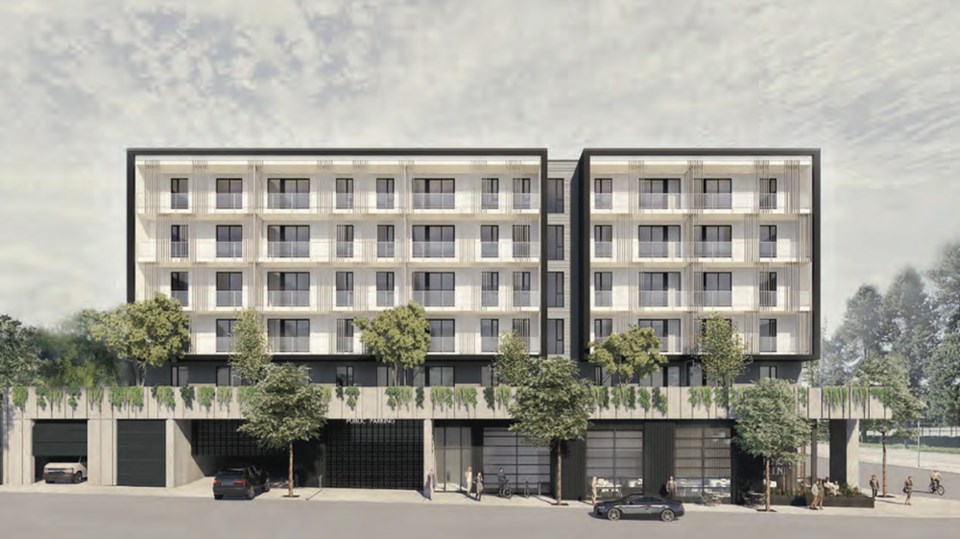The proponent for a new mixed-used development on Port Moody’s Murray Street will have to provide more space to create jobs, especially for light industry, as well as more affordable housing options and more consideration to some of its design choices.
Tuesday, council gave first reading to amendments to the city’s zoning bylaws for the 215-unit complex by Mosaic Homes that includes 50 market rental apartments, five below-market rental units, as well as spaces along the ground floor for commercial and light industrial use along with offices in mezzanines on the second floor. But it refused to give second reading that would have sent the proposal on to a public hearing.
“We should be continuing to engage,” Mayor Rob Vagramov said of the decision to pump the brakes on the proposal by Vancouver-based developer Mosaic Homes that would occupy a vacant industrial property across from Inlet Field. “A little more work probably should be done here.”
In a report, Port Moody’s senior development planner, Kevin Jones, said the project, that is comprised of three six-storey buildiings, had already evolved since it was first presented to council’s committee of the whole last May. Some of the changes include the addition of the rental units, larger commercial spaces along the ground floor to accommodate the needs of light industrial tenants as well as enhancements to the residential component that would make 40% of them adaptable and the remaining 60% ready for the installation of wider doorways, power door openers and grab bars so senior residents can age in place.
Michael Green, the project’s architect, told council, “We do think it has a very healthy mix of housing and a creative approach to commercial and industrial opportunities.”
Adrien Herberts, the vice-president of land and development for Mosaic Homes, estimated the latter would bring up to 159 jobs.
But some councillors said that’s not enough.
“What we’re really short on is jobs density,” said Coun. Hunter Madsen, adding he’d like to see the proposal get closer to the city’s recently-adopted goal of providing 42 jobs for every 100 residents. “We’re losing ground as opposed to gaining ground for the economic viability of the city.”
Coun. Steve Milani suggested the developer could afford to give up some of the project’s 355 parking spots because of its proximity to the nearby Moody Centre SkyTrain station and instead allot more space for offices.
But Coun. Zoe Royer said the size and design of some of the industrial spaces on the ground floor, several with lofts, would make them ideal for local artists and artisans.
“It’s something that’s sorely missing,” she said. “The more help we have to live into our moniker, ‘The City of the Arts,’ the better.”
Port Moody city planner André Boel cautioned while more spaces for light industrial occupants might be desirable to council, “it’s challenging to mandate light industrial. We don’t know who might be interested in going in there.”
Boel added the developer is proposing a marketing program to attract local light industries to the spaces, which are open and large enough they can be adapted to several possible uses.
Herbert agreed. “We don’t want a situation where the zone prescription results in spaces that can’t be filled.”
Still, Coun. Meghan Lahti warned, Port Moody has to stay conscious of its diminishing industrial tax base.
“I think we need to be very purposeful in how we assign uses of these spaces.”



